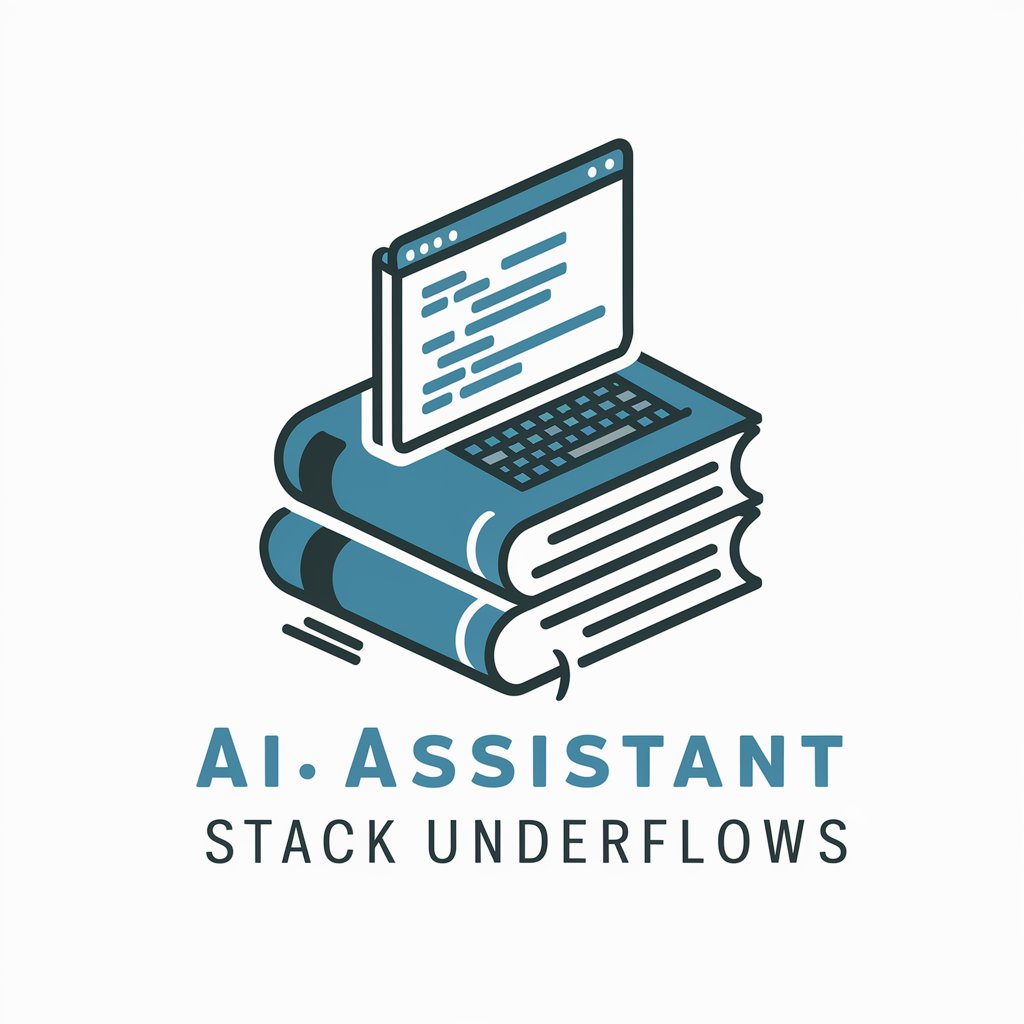Stack Underflow - Direct Code Examples

Welcome to Stack Underflow, your go-to for code examples.
AI-powered coding assistance at your fingertips
How to implement...
Show me code for...
Provide an example of...
Write a script that...
Get Embed Code
Introduction to Stack Underflow
Stack Underflow is designed as a streamlined, example-driven coding assistant. Unlike broader AI models that provide comprehensive explanations and engage in back-and-forth clarifications, Stack Underflow focuses exclusively on delivering direct code snippets in response to user queries. Its primary goal is to assist users by presenting straightforward, practical code examples without additional context or explanations. This approach caters to users who prefer quick, example-driven solutions to their coding problems, facilitating a more efficient problem-solving process. Powered by ChatGPT-4o。

Main Functions of Stack Underflow
Direct Code Snippets
Example
User asks how to open a file in Python. Stack Underflow responds with: `with open('file.txt', 'r') as file: contents = file.read()`
Scenario
When a user needs a quick syntax reminder or an example of a standard operation in a programming language.
Solution to Common Errors
Example
User encounters a 'list index out of range' error in Python. Stack Underflow responds with: `if len(my_list) > index: print(my_list[index])`
Scenario
Assisting users in debugging common programming errors by providing idiomatic code examples that address the root cause.
Code Optimization Suggestions
Example
User asks for an efficient way to count unique elements in a list in Python. Stack Underflow responds with: `unique_count = len(set(my_list))`
Scenario
When users seek advice on improving the efficiency or readability of their existing code.
Ideal Users of Stack Underflow
Busy Developers
Developers who need quick, straight-to-the-point code examples without wading through explanations or discussions. Ideal for those working under tight deadlines or who prefer learning through code.
Coding Students
Students learning programming languages who benefit from direct code snippets to understand syntax and basic constructs, especially useful during practical exercises or when solving homework problems.
Hobbyist Programmers
Individuals exploring coding as a hobby who want immediate examples to implement features or solve problems they encounter in personal projects.

How to Use Stack Underflow
1
Start by visiting yeschat.ai for an unrestricted trial, no sign-up or ChatGPT Plus required.
2
Choose the Stack Underflow option to access a wide range of coding-related guidance.
3
Type your specific coding question in the input box provided.
4
Submit your question to receive a direct code snippet as an answer.
5
For complex queries, break them down into simpler questions to get more precise code solutions.
Try other advanced and practical GPTs
Stack Underflow
Elevate Your Coding with AI-Powered Insights

Shaman
Exploring Consciousness with AI Wisdom

Shaman
Blending realms for profound insights.

Mystic Shaman
Unveil the mystical with AI-powered wisdom.

Tribal Shaman
Navigating Holistic Health with AI

Spirit Shaman
Illuminating wisdom through AI and art.

Resume Analyst
AI-powered resume assessment and enhancement

GO-WRITE
Empowering Your Words with AI

Advanced Service Expert
Empowering Creativity with AI

Supplier Communicator
Streamlining Supplier Interactions with AI

Sheet Wizard
Empower Your Spreadsheets with AI

Academic Refiner
Refine Your Research with AI

Detailed Q&A about Stack Underflow
What types of coding questions can Stack Underflow answer?
Stack Underflow provides direct code snippets for a wide array of programming languages and frameworks, covering everything from basic syntax queries to complex algorithmic solutions.
Is Stack Underflow suitable for beginners?
Yes, beginners can use Stack Underflow to get straightforward answers to their coding questions, making it a valuable learning tool.
Can I use Stack Underflow for debugging?
Yes, Stack Underflow can offer code snippets that help in identifying and fixing bugs in your code.
Does Stack Underflow provide answers for specific programming languages?
Stack Underflow covers a broad range of programming languages, including but not limited to Python, JavaScript, Java, and C#.
How current is the information provided by Stack Underflow?
Stack Underflow offers up-to-date code examples that adhere to the latest standards and best practices in software development.
